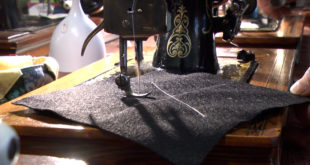The Michigan Department of Environment, Great Lakes, and Energy (EGLE) is experimenting on the western end of Torch Lake. Coordinator Stephanie Swart says that the superfund site has always hoped to revitalize the benthos population naturally, but that has not been enough. Swart says benthos can be important to ensuring the health of the lake’s fish population.
To help increase the number of insects, EGLE has installed two tiers of habitat. Wetlands are slightly modified along the shore with grasses and other protection. The capped areas have been excavated below the water line and Swart says they are essentially a buffer against residual mining materials that are harmful to the bugs.
EGLE will have a contractor monitor the site over the next year. Swart says that although Torch Lake has been a superfund site since 1986 and is a registered area of concern, money to help rehabilitate it has generally been scarce. The work is being done thanks to the Great Lakes Restoration Initiative and the United States Environmental Protection Agency.
 Keweenaw Report Your Source for Local News and Sports
Keweenaw Report Your Source for Local News and Sports





